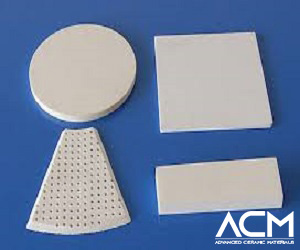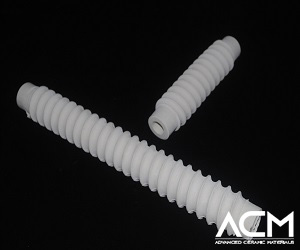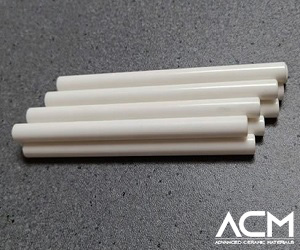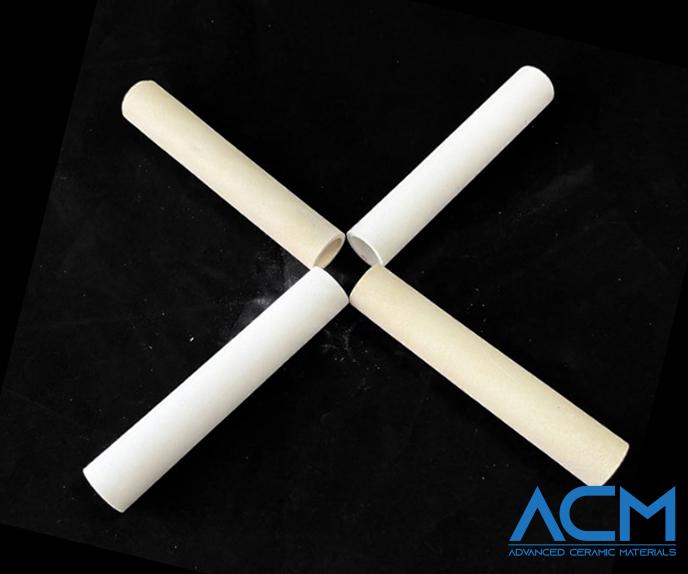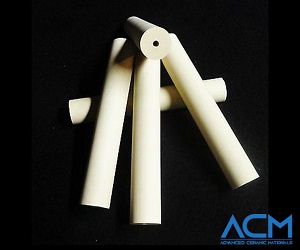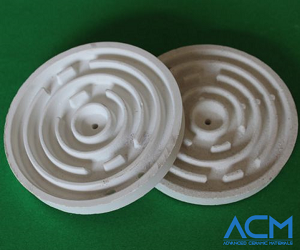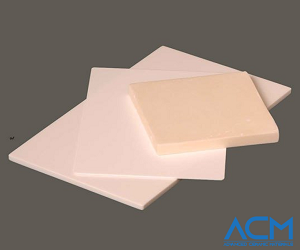MC2249 Mullite Plate, Silicate Ceramic Plate
- Catalog No. MC2249
- Color Off-white
- Shape Plate
- Thermal Conductivity 6 W/m·K
- Dielectric Strength 9.8 ac-kv/mm
Datasheet
Inquiry
MC2249 Mullite Plate, Silicate Ceramic Plate
Mullite Plate Description
Mullite plate is made of silicate ceramic. The main crystal phase of the mullite plate is 3Al2O3·2SiO2. It has a low thermal expansion, good mechanical strength, and resilience at elevated temperatures. Raw mullite materials are easily obtained and reasonably priced. It is certainly one of the most important oxide materials for both conventional and advanced ceramics. Its workability allows an extensive range and flexibility in fabrication.
Advanced Ceramic Materials (ACM) is a trusted supplier of mullite ceramic plates.
Mullite Plate Specifications
| Chemistry Content | |||||||||
| Al2O3 | SiO2 | TiO2 | Fe2O3 | CaO·MgO | K2ONa2O and others | ||||
| 62.50% | 34.50% | 0.10% | 0.80% | 0.90% | 1.30% | ||||
| Mechanical | Units of Measure | SI/Metric | (Imperial) |
| Density | gm/cc (lb/ft3) | 2.8 | -175 |
| Porosity | % (%) | 0 | 0 |
| Color | – | off-white | off-white |
| Flexural Strength | MPa (lb/in2x103) | 180 | -26 |
| Elastic Modulus | GPa (lb/in2x106) | 151 | -22 |
| Shear Modulus | GPa (lb/in2x106) | – | – |
| Bulk Modulus | GPa (lb/in2x106) | – | – |
| Compressive Strength | MPa (lb/in2x103) | 1310 | -190 |
| Hardness | Kg/mm2 | 1070 | – |
| Fracture Toughness KIC | MPa•m1/2 | 2 | – |
| Maximum Use Temperature | °C (°F) | 1650 | -3000 |
| (no load) | |||
| Thermal | |||
| Thermal Conductivity | W/m•°K (BTU•in/ft2•hr•°F) | 6 | -42 |
| Coefficient of Thermal Expansion | 10–6/°C (10–6/°F) | 5.4 | -3 |
| Electrical | |||
| Dielectric Strength | ac-kv/mm (volts/mil) | 9.8 | -245 |
| Dielectric Constant | @ 1 MHz | 5.8 | 5.8 |
| Dissipation Factor | @ 1 kHz | 0.003 | 0.003 |
| Volume Resistivity | ohm•cm | >1013 | >1013 |
Mullite Plate Applications
Mullite ceramic plates have the following applications:
- Machining of components and toolings
- Protection tubes
- Realization of prototypes
- Manufacturing of small ceramic series
- Coil cores
- Electrical insulator
- Template of assembly
- Injectors, nozzles
- Vacuum parts
- Thermal insulators, inductive insulators
- Template of brazing and welding
- Sensors
Request a Quote
-
Attachment (Optional)
No file chosen









